Recognizing the impact of systemic and institutional racism, how might we provide equitable care for patients with chronic conditions, such as hypertension and diabetes? How might we move toward a care delivery model that is “trauma-informed,” acknowledging racism both as trauma and a risk factor for cardiovascular disease?
Hear from health care leaders from Kaiser Permanente and California safety net organizations on how their work to improve health equity and eliminate disparities has evolved in the wake of the COVID-19 pandemic and the tragic deaths of George Floyd, Breonna Taylor, and so many others. In addition to the webinar recording, you can find further readings and key takeaways below.
WHO SHOULD WATCH THIS WEBINAR?
Anyone interested in eliminating inequities in health and health care.
Jump to…
01:13 – Eliminating Health Inequities: “What are your most pressing challenges?”
01:32 – Introducing health equity leadership faculty
02:37 – Dr. Ronald Copeland [Keynote] – Opening remarks: context setting and our collective challenge
14:50 – Dr. Winston Wong [Panel Moderator] – Panel introduction
18:31 – Dr. Milin Ratanasen [Panelist]
23:07 – Dr. Geoffrey Leung [Panelist] | Race, Ethnicity, and Whole Person Health Score (Download PDF)
30:30 – Dr. Maria Carrasco [Panelist]
38:12 – Tosan Boyo [Panelist] | Why Does Equity Matter? (Download PDF) |
- Resources shared: Racial Equity Toolkit: An Opportunity to Operationalize Equity and ZSFG Staff Equity Survey.
50:33 – “What are two lessons you feel that are critical towards achieving health equity…” [All Panelists]
58:34 – Dr. Winston Wong and Michael Rothman (CCI) – Closing remarks and next steps
Top 9 Takeaways
1. Take your work beyond the walls of the exam room.
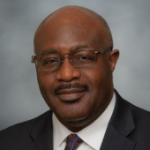 Health takes place beyond the four walls of the clinic and hospital. As Kaiser Permanente physician and vice-president Ronald L. Copeland said, “We have to get comfortable declaring that systemic racism, neglect, and oppression are determinants of health. There are reams and reams of data that confirm that every day. We have to understand that we are each other’s keepers and that the environments we create need to create fairness and equity for all of us, not just some of us.” (See Dr. Copeland’s keynote remarks at the session.) To help keep that in mind, Copeland suggests co-designing health programs with their patients and community organizations.
Health takes place beyond the four walls of the clinic and hospital. As Kaiser Permanente physician and vice-president Ronald L. Copeland said, “We have to get comfortable declaring that systemic racism, neglect, and oppression are determinants of health. There are reams and reams of data that confirm that every day. We have to understand that we are each other’s keepers and that the environments we create need to create fairness and equity for all of us, not just some of us.” (See Dr. Copeland’s keynote remarks at the session.) To help keep that in mind, Copeland suggests co-designing health programs with their patients and community organizations.
2. Make health equity a moral and strategic priority.
Challenging discrimination in health care is extraordinarily difficult, Copeland acknowledges. “People’s reluctance to take this on is understandable, but it’s not acceptable,” he said. He called on healthcare leaders to challenge this apathy — what sociologist W.E.B. Du Bois in 1899 called the “peculiar indifference” to the suffering of African Americans — and become true allies. A key part of that strategy? “Building coalitions with likeminded people and community partners, integrating health equity into quality improvement programs, and creating data transparency to identify and address disparities.”
3. Frame health equity as a job requirement rather than a “project.”
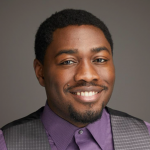 Tosan O. Boyo, MPH, is chief operating officer of Zuckerberg San Francisco General Hospital. Starting his job at the hospital just after the Muslim ban and stepped-up immigration raids in 2017, he saw that a lot of the staff and patients felt anxious and unsafe. “The question was, what was San Francisco General going to do about it, especially as we strive to be the sanctuary within a sanctuary,” he recalled. He began by looking at the hospital’s number one quality metric – readmissions – and deciding to break every readmission down by race and ethnicity. This revealed that African Americans, although they made up only 17 percent of the patient population, represented 47 percent of all readmissions for heart failure.
Tosan O. Boyo, MPH, is chief operating officer of Zuckerberg San Francisco General Hospital. Starting his job at the hospital just after the Muslim ban and stepped-up immigration raids in 2017, he saw that a lot of the staff and patients felt anxious and unsafe. “The question was, what was San Francisco General going to do about it, especially as we strive to be the sanctuary within a sanctuary,” he recalled. He began by looking at the hospital’s number one quality metric – readmissions – and deciding to break every readmission down by race and ethnicity. This revealed that African Americans, although they made up only 17 percent of the patient population, represented 47 percent of all readmissions for heart failure.
Since the hospital had no equity strategy then in place, Boyo agreed to take the lead. “To ensure the whole organization was rallying around equity,” he led the development of an equity counsel comprised equally of frontline staff and executives and directors. The goals: To understand the health system’s patients, eliminate disparities and develop the hospital’s workforce. To make sure everyone was involved, Boyo and team asked each of the 57 departments to stratify their top quality metric by race and send the data to the hospital’s health commission and CEO for evaluation.
“This was our way to make sure that the whole organization was rallying around equity — a way to not let anyone off the hook and ensure that equity was not just a project, but a priority and a strategy for the organization,” Boyo said. “We made sure that we were getting every single person in the organization, even if you’re in environmental services or in biomedical engineering, all the way to department of surgery, to agree that equity matters and that you have work on equity. The CEO or leader of the organization, too, has to be an advocate for the equity work. It cannot be a project. If it’s framed as a project, it is going to be very hard for it to be successful.
View Tosan’s presentation from the webinar: Why Does Equity Matter? (Download PDF)
Other resources shared: Racial Equity Toolkit: An Opportunity to Operationalize Equity and ZSFG Staff Equity Survey.
4. Give time and space for patients to acknowledge inequities.
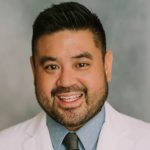 Milin Ratanasen, MD, FACP, assistant physician-in-chief at South Sacramento Kaiser Permanente, said, “Let them ask the hard questions, even if it means shining a spotlight on any shortcomings. For example, we make an effort to really poll our patients, whether it’s inpatient encounters, health education sessions, or our patient advisory group, and ask them, ‘What’s the number one barrier to care?’ For our African American patients, the number one response was ‘trust in the medical system.’ To hear that from your own patients, it really hits home in a different way…It informs our direction.”
Milin Ratanasen, MD, FACP, assistant physician-in-chief at South Sacramento Kaiser Permanente, said, “Let them ask the hard questions, even if it means shining a spotlight on any shortcomings. For example, we make an effort to really poll our patients, whether it’s inpatient encounters, health education sessions, or our patient advisory group, and ask them, ‘What’s the number one barrier to care?’ For our African American patients, the number one response was ‘trust in the medical system.’ To hear that from your own patients, it really hits home in a different way…It informs our direction.”
5. Help your staff be health care heroes.
To sustain quality health care rooted in prevention, for example, Kaiser South Sacramento’s goal is for all clinicians, from the provider and radiology technician to medical assistants and staff, to feel ownership for it, according to Ratanasen. This means recognizing progress: “Sharing positive stories about patients and staff, not just macro achievements, but on a micro level as well,” he said. “It’s appealing to our staff’s identity as healthcare heroes while we strive to do the right thing, even when it’s hard to do.” He credits this approach “for developing an infrastructure with leaders who are passionate about the mission.”
6. Consider holistic measures to address disparities.
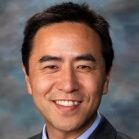 Realizing that traditional metrics for health often left out social determinants, Geoffrey Leung, MD, chair of family medicine at the Riverside University Health System, helped build an assessment around six measures of health, including physical health, emotional health, resource use, socioeconomic ownership, nutrition, and lifestyle. After weighting those elements, they were able to see the self-assessment and predict average life expectancy. “The metrics actually gave us some insight into things we can focus on in a concrete way in a health care setting that might have an impact on life expectancy later on,” Leung concluded.
Realizing that traditional metrics for health often left out social determinants, Geoffrey Leung, MD, chair of family medicine at the Riverside University Health System, helped build an assessment around six measures of health, including physical health, emotional health, resource use, socioeconomic ownership, nutrition, and lifestyle. After weighting those elements, they were able to see the self-assessment and predict average life expectancy. “The metrics actually gave us some insight into things we can focus on in a concrete way in a health care setting that might have an impact on life expectancy later on,” Leung concluded.
Not only did the assessments closely reflect actual life expectancy trends by race and ethnicity, the team found that some assumptions they had made about racial and ethnic groups were incorrect. For example, Latinos scored themselves better than non-Latinos in terms of finances, job status, anxiety, depression, and other determinants. “That was a bit puzzling to us, and in digging further into the literature, we discovered the ‘Hispanic life expectancy paradox,’” Leung said – that is, even though Latinos face lower socioeconomic conditions relative to whites, overall they have comparable and often better outcomes, including higher life expectancy. The team also learned that its African American patients had an education level advantage over other groups. Such findings may suggest some racial and ethnic patient groups enjoy protective factors linked to culture or have strengths of which many clinicians are unaware.
View Dr. Leung’s presentation from the webinar: Race, Ethnicity, and Whole Person Health Score (Download PDF)
7. Realize the importance of language equity.
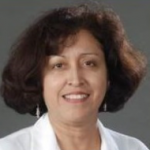 With 275,000 Spanish-speaking patients with limited English proficiency in her health system in Kaiser Permanente in Southern California, family physician Maria Carrasco did studies that linked a much higher rate of no-shows to patients whose doctor did not speak the language. But although 80 to 85% of patients in the region were Spanish-speaking, there was a marked shortage of physicians who spoke Spanish fluently.
With 275,000 Spanish-speaking patients with limited English proficiency in her health system in Kaiser Permanente in Southern California, family physician Maria Carrasco did studies that linked a much higher rate of no-shows to patients whose doctor did not speak the language. But although 80 to 85% of patients in the region were Spanish-speaking, there was a marked shortage of physicians who spoke Spanish fluently.
In Southern California, our leadership has really committed to equity, inclusion and diversity efforts for over a decade,” Carrasco said. “At the end of the day, being able to communicate directly with your patients is really the standard, the highest standard we could have,” she says. “We have interpreters, so our next step is to hire more physicians and call center staff who speak the patients’ language, although it is all dependent on where you sit. We have a medical office in Glendale where the community’s primary language is Armenian. So we’re looking at hiring or recruiting more physicians who can speak directly to the population – and vice versa.”
8. Support and honor your frontline staff.
Sadly, the pandemic has been linked to rising rates of burnout and suicide attempts among healthcare professionals. “Creating support and self-care for those providing care and reflecting the makeup of our communities is critical,” according to Copeland.
9. Realize your work and the community are intimately connected.
 Winston Wong, chair of the National Council for Asian Pacific Islander Physicians and the DHHS’s Advisory Committee on Minority Health, pointed out that “there can seem to be a profound disconnect between things that are really important in our communities and the work that we do on the dry clinical side of assuring that people have the right kind of medications, their blood pressures are being measured, and their diabetes is controlled. But it’s not a disconnect; it’s about how we reconcile and understand how these things are all connected.” He noted that if health care workers look at the leading causes of death in 2020 — cardiovascular disease, cancer and COVID-19 — “I think we recognize the issues of marginalization, vulnerability, and racism all contribute to the disproportionate burden of these diseases among communities of color. And I salute all of you who are at the frontlines, caring for people who need it most.”
Winston Wong, chair of the National Council for Asian Pacific Islander Physicians and the DHHS’s Advisory Committee on Minority Health, pointed out that “there can seem to be a profound disconnect between things that are really important in our communities and the work that we do on the dry clinical side of assuring that people have the right kind of medications, their blood pressures are being measured, and their diabetes is controlled. But it’s not a disconnect; it’s about how we reconcile and understand how these things are all connected.” He noted that if health care workers look at the leading causes of death in 2020 — cardiovascular disease, cancer and COVID-19 — “I think we recognize the issues of marginalization, vulnerability, and racism all contribute to the disproportionate burden of these diseases among communities of color. And I salute all of you who are at the frontlines, caring for people who need it most.”
applicable reading:
- “You Can’t Achieve True Health Equity Without Addressing Racism,” – Part I (July 29, 2020) and Part II (August 5, 2020), by Ronald Copeland
- “The multiple worlds of Black health workers,“ by Tosan O. Boyo (June 10, 2020)
KEYNOTE SPeaker:
Ronald Copeland, MD, FACS
— Senior Vice President & Chief Equity, Inclusion and Diversity Officer for Kaiser Permanente
Dr. Copeland leads Kaiser Permanente’s program-wide efforts to ensure its strategic vision for equity, inclusion, and diversity is successfully implemented.
Panel moderator:

Winston F. Wong, MD, MS, FAAFP
— Chair, National Council of Asian Pacific Islander Physicians; Chair, Advisory Committee on Minority Health (US Department of Health and Human Services)
Dr. Wong has over 35 years of leadership roles in community medicine, including service as the Medical Director of Asian Health Services and most recently as medical director for community benefit at Kaiser Permanente.
PANELISTS:
 Tosan O. Boyo, MPH, FACHE
Tosan O. Boyo, MPH, FACHE
— Chief of Operations, San Francisco COVID-19 Command Center and Chief Operating Officer, Zuckerberg San Francisco General Hospital (ZSFG)
Born in Nigeria and raised in New Jersey, Tosan has backpacked across all seven continents, something that shaped his views on how intersections across culture, policy and health impact vulnerable communities.
 Geoffrey Leung, MD, Ed.M
Geoffrey Leung, MD, Ed.M
— Ambulatory Medical Director and Chair of Family Medicine at Riverside University Health System (RUHS)
Dr. Leung supports the primary care providers at the RUHS Medical Center Clinics and 12 RUHS Community Health Center sites and is working closely with RUHS Public Health to support COVID efforts across Riverside County.
 Maria Carrasco, MD, MPH
Maria Carrasco, MD, MPH
— Family Medicine, Kaiser Permanente
Dr. Carrasco established her medical practice at the KP Montebello Medical Offices, which serves a highly diverse populationand is Kaiser Permanente SCal Region Physician Lead for Equity, Inclusion and Diversity, .
 Milin Ratanasen, MD, FACP
Milin Ratanasen, MD, FACP
— Assistant Physician-in-Chief of Quality, Kaiser Permanente, South Sacramento
Dr. Ratanasen is an adult primary care physician at Kaiser Permanente South Sacramento, and currently oversees population management programs for hypertension, diabetes, and cardiovascular risk reduction.
READ FURTHER: FULL FACULTY BIOS
Find this useful or interesting? We’re constantly sharing stuff like this. Sign up to receive our newsletter to stay in the loop.



